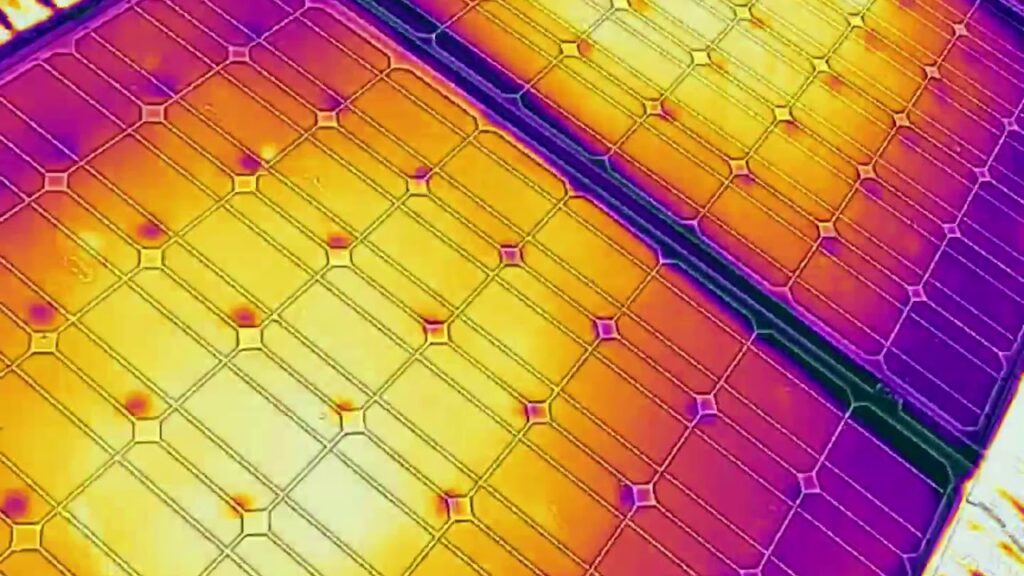Infrared thermal imaging inspection of solar panels involves using infrared technology to detect and analyze the thermal patterns on the surface of solar modules. This inspection technique is commonly used for preventive maintenance and troubleshooting in solar photovoltaic (PV) systems.
- Principle of Infrared Imaging:
- Infrared cameras capture the heat radiation (infrared radiation) emitted by objects. Different materials and surfaces emit different levels of infrared radiation based on their temperatures.
- Inspection Procedure:
- Equipment: An infrared camera, also known as a thermographic camera, is used for the inspection. These cameras can detect temperature variations and convert them into a visual image called a thermogram.
- Conditions: The inspection is typically conducted under specific conditions, often during daylight hours when the sun is shining on the solar panels. This allows for a temperature differential between the cells and helps identify potential issues.
- Identification of Anomalies:
- Temperature Variations: Solar cells or components with anomalies, such as defects, electrical issues, or obstructions, can exhibit different temperatures than surrounding areas. These variations are captured by the infrared camera.
- Hotspots and Coldspots: Hotspots may indicate issues like electrical resistance, which can lead to energy loss or potential safety hazards. Coldspots may suggest shading or malfunctioning cells.
- Data Analysis:
- Thermographic Analysis: The thermographic images are analyzed to identify areas of concern. Patterns and temperature differentials can indicate specific problems, such as defective cells, loose connections, or malfunctioning inverters.
- Severity Assessment: The severity of the issues is often assessed based on the temperature differentials and the impact they may have on the performance and safety of the solar panels.
- Benefits of Infrared Thermal Imaging:
- Early Detection: Infrared inspections can identify issues at an early stage before they lead to significant performance degradation or system failures.
- Preventive Maintenance: Regular infrared inspections as part of a maintenance program can help prevent unexpected downtime and optimize the overall performance of the solar PV system.
- Cost Savings: By identifying and addressing issues early, the cost of repairs or replacements can be minimized.
- Limitations:
- Weather Conditions: Infrared inspections are most effective under certain weather conditions, such as clear skies with sunlight, which may limit the inspection time.
- Surface Reflection: Highly reflective surfaces may affect the accuracy of infrared readings, and professionals often take measures to mitigate these effects.
In summary, infrared thermal imaging inspection of solar panels is a non-invasive and effective method for identifying potential issues and ensuring the optimal performance of a solar PV system. Regular inspections using infrared technology can be a valuable part of the maintenance and monitoring plan for solar installations.


